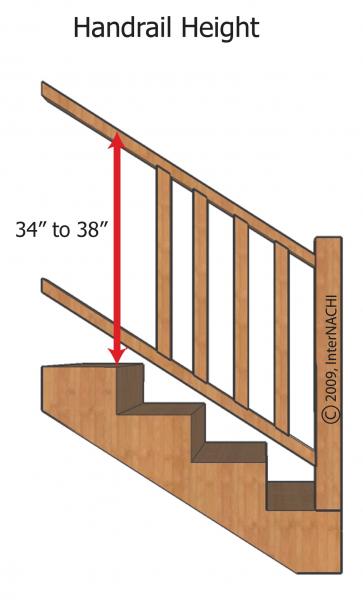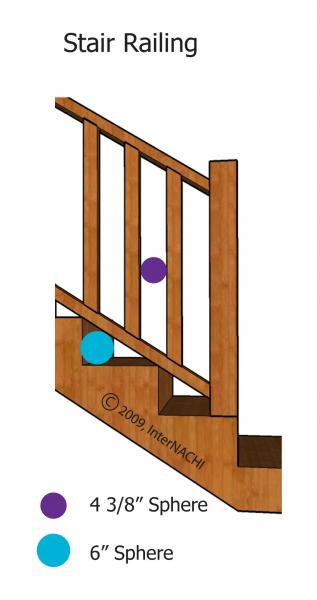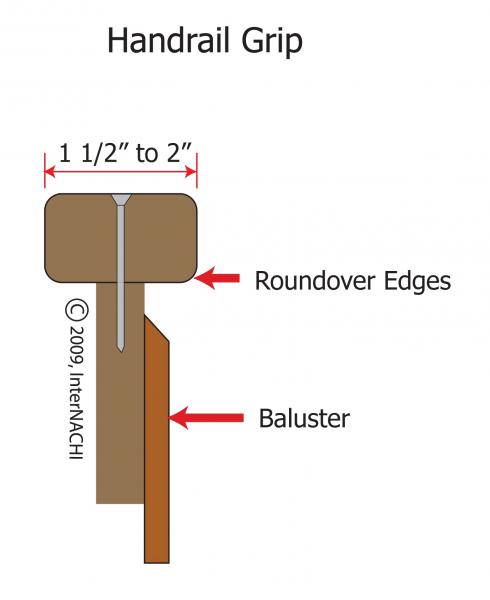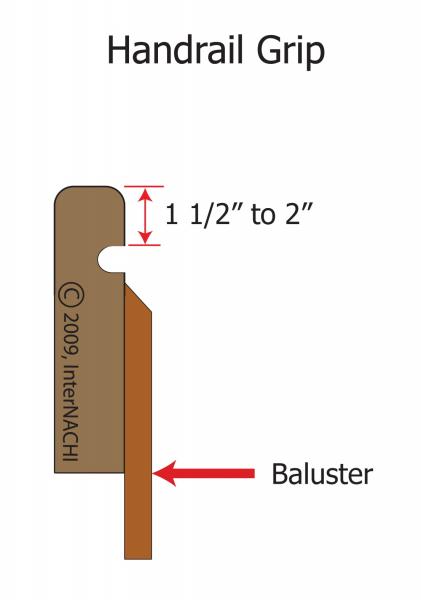General Stairway Safety Recommendations
Below is a discussion of the general requirements (paraphrased for readability) for stairways.
· Minimum stairway width is 36” wide.
· Headroom minimum 6’ 8” measured vertically.
· Maximum riser height is 7 ¾ “ high, can vary no more than 3/8” between treads.
· Minimum tread depth is 10”. Can vary no more than 3/8”.
· On winders minimum tread depth at narrow end is 6”. Walk line 12” in must have min. tread depth 10”. Can vary no more than 3/8”.
Note* Many older homes are not built to these standards. For the most part this is ok because it was allowed at the time the home was built. However, it is wise to consider improvements that affect safety or function.
· Nosing at treads minimum ¾” max 1 ¼” unless the tread is over 11”.
· Open risers are permitted if the space is not over 4”.
· Steps 30 inches above grade or less can have open risers.
· There should be a floor or landing at the top and bottom of each stairway.
· Landing is not required at the top of an interior flight of steps if the door does not swing over the stairs.
· A flight of stair shall have a vertical rise between landings of no more than 12’.
· Minimum stairway landing is 36” x 36”.
· Treads should be no more than 1 in 48 out of level. 2% slope.
· Handrails required on one side if there are four or more risers in the flight of stairs (from one landing to another).
· Handrail height should be between 34 and 38 inches high.
· Handrails shall be continuous as the steps are…. should be returned to wall and shall have a space of 1 ½” between the wall and handrail.
· A graspable hand rail is required. If circular- 1 ¼” -2” diameter, not circular- 4-6 ¼” perimeter dimensions or it shall have a finger recess on it at the appropriate place.
· Lights are required for stairways. A switch is required at the top and bottom of each stairway. Exterior stairway light switch shall be located inside the dwelling. Exterior steps require a light at the top of the stairs only.
About Guards and Handrails
· Raised floor surfaces above 30” above grade shall have a guard not less than 36” high.
· Open sides of stairs 30” or more shall have guards 34” or more in height.
· Porches and decks above 30” which are enclosed with insect screening requires guards.
· Openings in guards not more than 4” apart.
· Openings in guards beside steps not more than 4 3/8” apart.
· The triangular opening at the side of steps cannot allow a 6” sphere to pass.
· In 2000 the IRC prohibited guards with ladder type railings but this provision was removed in 2001 and there is no reference to it in the 2003 IRC. FYI
· Railings shall be able to withstand a 200 lb load applied in any direction at any point along the top.
· Interior under stair surface covered with ½” gypsum board.
· Egress and exit exterior stairways positively anchored to primary structure using fasteners not subject to withdrawal.( not just nailed or toenailed)
References IRC 2006 – R311.5, R 312, R303.6
Pictures below show typical handrail requirements.
Egress
A home is required to have at least one required egress door. For most homes the required egress door is the front door and is in general must be a 36” side hinged door (32” clear width between door stops and the full open door).
A landing is required on the exterior side of both the required egress door and other doors. That landing cannot be more than 7 ¾ lower than the top of the threshold. On doors other than the required egress door a landing is not required where there are two or fewer risers on the exterior side of the door.
*Note and Commentary- (This surprised me too. I believe this to be too restrictive on doors other than the required egress door. If I read this right a stairway on the back of the house with 4 risers would need a landing while similar stairs in the garage would not. I know I’ve seen plenty of homes built this way. In some cases it is not practical or cosmetically appealling to install a landing going out the back door. Hopefully the rule makers should rethink this requirement in the near future as there doesn’t seem to be a clear safety reason for it and I’m sure many are unintentionally breaking it.) I welcome your comment on this.
A screen door or storm door is allowed to swing out over the steps.
A floor or landing is not required at the top of an interior flight of stairs (including enclosed garage steps) provided the door does not swing out over the steps.
A door threshold cannot be over 1 ½ “ higher than the finished floor.
reference (2012 IRC R311)





